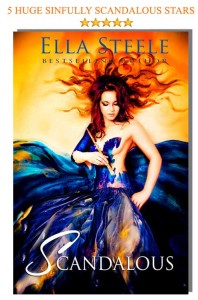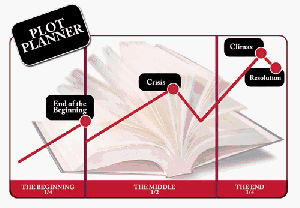 OMG – U guys r gonna make me cry! The reviews for SCANDALOUS have been so phenomenal. I can’t thank you enough for trying something new with me!
OMG – U guys r gonna make me cry! The reviews for SCANDALOUS have been so phenomenal. I can’t thank you enough for trying something new with me!
Here’s the latest review by Reese:
5 STARS 100/100 (I fricken got 100%!!!!)
Synopsis: Millionaire Jack Gray earned his fortune creating erotic art for a discerning clientele. He doesn’t use a brush to depict these hauntingly beautiful portraits–he uses bare skin. A sterling reputation is the only thing standing between Jack and poverty as he skirts the thin line between fine art and cheap sensationalism. To ensure that his character remains beyond reproach, an assistant observes his sessions.
While interviewing for a new assistant, Jack hears her voice–Abby Tyndale–the girl who got away. The last time Jack saw her was over a decade ago. After years of romantic tension she had nearly kissed him, but then disappeared without a trace. He hasn’t seen her since. Until now. When he learns that his lost love joined the clergy after she fled to West Texas, his heart sinks. She’s forbidden, forever set apart by her vows.
Jack’s life quickly spins out of control as Abby grows closer to him, and worsens when his client list is stolen. The financial blow alone is damning, but it’s the scandal brewing beneath the surface that he fears the most. Jack and Abby’s livelihoods rely on their reputations. A single scandal will destroy them both. While fearing a contrived scandal, they have courted a very real one as their romance reignites.
This erotic romance is an addictive tease that will leave you breathless and begging for more.
This romance novel is by bestselling author H.M. Ward under the pen name Ella Steele.
Review:
I wasn’t sure what to expect from H.M. Wards novel Scandalous before I read it. I loved the cover, just like all her others, was completely stunning. While reading I honestly could not put this story down. Scandalous follows the life of Abby Tyndale who finds herself back in New York after a mishap with her congregation down in Texas.
This book was nothing like I expected. It was completely original, and breathe taking, and just over all like any of H.M. Wards books, mold breaking.
I originally thought you that they would meet, lots of sexual tension, and then in then end they would be together. And honestly if you’re looking for that, don’t read Scandalous. This book was nothing like I expected.
I loved everything about this novel. The characters, the plot, the art….Oh the art!!! In my mind all I could see was provocative, bold, colorful canvases. Such amazing description, I honestly wish from the deepest depths of my soul that I could see one of these amazing works of are that Jonathan/ Jack Gray created. The art in my mind is so stunning I can only imagine what H.M. Ward was imagining while she wrote this story up.
Characters
Abby Tyndale was the perfect character. Seriously I loved her. She’s an amazingly strong character. Never giving up on what she wants. She knew exactly what she wanted, and although sometimes she doubted, she knew who she was and never backed down. She was shy, and was always blushing which was so cute. Honestly, even though she had flaws, that’s what made her even more likeable.
Jack Gray was the perfect male character. Naughty, professional,drop dead GORGEOUS!!! And amazingly talented. I loved reading about what he did with the paintings and the models. I had to start fanning myself when reading about how he moved his artistic ways into the “bedroom.” Honestly they were the perfect couple. Both seeing what the other needed and wanted.
Kate was amazing. She’s the best kind of friend. Honest, even when you don’t want to hear the truth. She was incredibly funny, and so mom like, yet friend at the same time. Completely hilarious.
Oh and on the sexual tension level I have two words: Nipple clamps. Seriously, I loved how the sexual tension was so perfect and not over the top. In all honesty I was a little scared for a while that they would never get together, and when they did, I was doing a serious happy dance around the entire planet.
The twist towards the end of the book, and yes of coarse there’s a twist…you sillies, I never saw that coming. I was completely appalled! Seriously H.M. Ward knows how to throw an extremely heart wrenching twist you’d never see coming into every novel and Scandalous was no exception!!!
Favorite Quote:
“You suck, you know that?” I laughed, cringing as I felt sand in places they shouldn’t be. “I’m full of sand. All my clothes could be from Sandcastles-R-Us.”
He straighted, “Is that so?”
“Which one? The sucking or the sand?” I laughed. I couldn’t stop. I hadn’t laughed so hard in forever. My sides felt like they were going to split open. Before I knew it, Jack was leaning down, reaching for me. I laughed, swatting, swatting him away, not realizing what he was doing. He managed to get a hold of my wrist and my thigh. He swung me up over his shoulders while I kicked and screamed.
Jack began to wade into the water, as I pulled his hair trying to stop him. “The sucking or the sand,” he murmured, still laughing as he went into the water deeper.”
(I seriously had a extremely hard time picking just one quote but I did it! I love this quote because it’s so cute, and just made me laugh. Reading about how perfect they were together was in little cute moments like these and I enjoyed this one mostest.)
Okay so if you missed it somewhere in my review I’ll spell it out: YOU NEED TO READ THIS BOOK!!! ASAP!!!
Rating: 100/5(5/5)
Get SCANDALOUS now:
Don’t miss the giveaways for June 2012. SCANDALOUS is one of the signed books you can win. Details are listed on this post. Thank you so much!!!!



